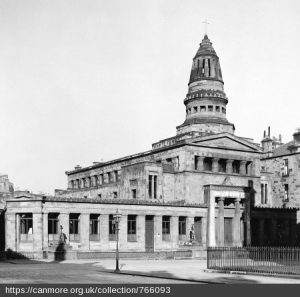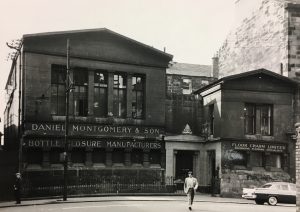To celebrate the bicentenary of Alexander ‘Greek’ Thomson‘s birth a programme of events and activities have been planned to take place throughout 2017. We will continue to update this calendar throughout the year with more and more exciting events as these are confirmed so please keep checking back. You can also sign up to our e-mail newsletter here to stay up to date.

In the bicentenary of Alexander ‘Greek’ Thomson’s birth, join Glasgow City Heritage Trust & The Alexander Thomson Society to ‘talk Thomson’ and decide: what is Thomson’s best building?
One of the Glasgow’s greatest architects, Alexander ‘Greek’ Thomson is praised for his originality, use of modern technologies and his personal Graeco-Egyptian style. Following on from the heated debates of our Battle of the Architects series and in the bicentenary of his birth, join Glasgow City Heritage Trust & The Alexander Thomson Society to ‘talk Thomson’ and decide once and for all: which of Thomson’s iconic works is really top of the pile? Can our speakers make a convincing argument for their favourite Thomson masterpiece in this architectural face-off?
ATS members receive free entry to this event, contact info@alexanderthomsonsociety.co.uk to receive your unique password.

Lost Thomson: Glasgow’s Loss
Thursday 21 September, 6pm
£10 (£5 discounted rate for members of the Glasgow Art Club)
In his bicentenary year, Fiona Sinclair gives an insightful talk on the lost works of the eminent architect Alexander ‘Greek’ Thomson.
Please arrive at 6pm for a welcome drink, with the talk commencing at 6.30pm sharp.
Alexander Thomson was born in Balfron, Stirlingshire, on 9th April 1817 and died in Glasgow on 22nd March 1875 at his home at no.1 Moray Place in the terrace he had himself designed.
Thomson was extremely successful with a large clientele for medium-sized villas and terraces of cottages in Pollokshields, Shawlands, Crossmyloof, Cathcart, Langbank, Bothwell and Cove and Kilcreggan.
In his day, Thomson was conspicuous for his originality in producing a distinctive modern architecture from the lessons and precedents provided by the Greeks, Egyptians and other ancient civilisations, and made extensive use of new materials like cast-iron and plate-glass.
His personal Graeco-Egyptian style was almost entirely confined to Glasgow, where he designed commercial warehouses, blocks of tenements, terraces of houses, suburban villas and three extraordinary Presbyterian churches, of which the St. Vincent Street Church is the only intact survivor.
Other important works still standing include Moray Place, Great Western Terrace, Egyptian Halls in Union Street, Grecian Buildings in Sauchiehall Street, and his villa, Holmwood, at Cathcart, which is now owned by the National Trust for Scotland.
Whilst a wealth of Thomson buildings remain there are also a significant number that have been tragically lost over the years. The reasons for these losses are several, from Thomson demolishing his own buildings – as with the Scottish Exhibition Rooms on Bath Street, through to bombing during World War II – as with Queens Park Church. The most common reason for the loss of these buildings however was redevelopment during the 1960s and 70s.
The losses were primarily tenemental properties spread throughout the city, however also included were two hotels, a printing works, a sculpture yard and two churches; Chalmers Memorial Free Church in the Gorbals and Queen’s Park Church.
Following his death in 1875, a marble bust of the architect by John Mossman was presented to the Corporation (now in the Kelvingrove Art Gallery) and the Alexander Thomson Travelling Studentship established, of which the second winner was Charles Rennie Mackintosh.
A map of the ‘lost’ buildings can be viewed here
Fiona Sinclair, is a Glasgow based architect and author with a passion for historic buildings.
If you wish to find out more about becoming a member of The Glasgow Art Club please visit our website
